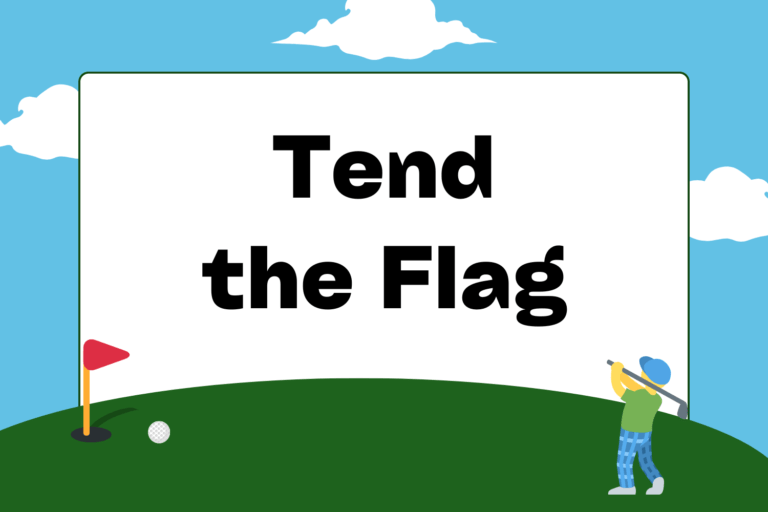One of the most basic questions in golf—how do I swing a club?—has one of the most complicated answers. There are so many aspects of a good golf swing, and there are a lot of opinions out there on the countless specifics.
However, if you’re new to the sport, there are fundamental keys you can learn to begin building a solid golf swing. Instill good habits from the start by keeping the following basics in mind.
One Golf Swing
One misconception many beginning golfers share is that you have to swing differently for different clubs. You don’t. All of your full swings will work almost identically. The only big changes you need to make are in ball position and stance width.
Ball Position
Ball position refers to where the ball sits relative to your feet. That is, if you set up to the ball and draw an imaginary line from the ball to the space between your feet, what is the ball position? Is it closer to your front foot (in the front of your stance)? Is it closer to your back foot (in the back of your stance)? Or is it in about the middle of your stance?
Short Irons & Wedges
When you’re setting up to the ball with a wedge or a short iron, you want the ball position to be in the middle of your stance on full shots. That’s because with high-lofted clubs, you want to get the ball high in the air and you want to create backspin on the ball so it lands softly on the green. In order to do that, put the ball in the middle of your stance so when you swing, you hit down on the ball.
Mid & Long Irons
If you’re hitting a mid-iron or a long iron, move the ball position up in your stance just a little bit. With the ball slightly ahead of the middle of your stance, you’ll still be able to hit down the ball, but you won’t have to worry about not getting enough loft on the shot.
Driver
Same pattern continues for your driver. Here, put the ball position up in your stance, just off of your front foot’s heel. This will help you hit the ball on the upswing, create over-spin, and will give you enough time to get the clubface squared away at impact.
Width of Your Stance
As the length of your club increases, the width of your stance should increase, too. With your shortest clubs—your wedges and your short irons—try starting with your feet just about shoulder-width apart. By the time you set up to the ball with your driver, you should almost double that width. Regardless of how wide apart your feet are, remember to keep ball position in mind. It’s all relative.
The Swing
A golf swing can be dissected into millions of parts (slight exaggeration), but they should all come together and perform as one fluid motion. In order to understand the golf swing, though, it does help to understand the two basic components: the backswing and the downswing.
The Backswing
The backswing is the windup of the golf swing. By bringing the club back and up to the top of your swing, you’re rotating your body in order to generate power.
Step 1: Posture & Balance
A good golf swing all starts with posture. If you set up to the ball with bad posture, you’ll have a much harder time getting your swing on the correct path—or plane—that you need to make solid impact with the ball.
A simple way to check if your posture is on point is to stand a comfortable distance away from the ball, so that your arms aren’t scrunched too close to your body and aren’t stretched too far out, either. Stand straight up and then flex your knees and bend at the waist. You don’t want to hunch over the ball, but you don’t want to stand too upright, either. Also, don’t let your chin rest against your chest—keep it up.
The right posture is all about comfort and moderation.
Step 2: The Takeaway
The backswing should start with a solid takeaway. Taking the club back on a little bit of an outside line is one of the biggest causes of slicing the ball, so make sure you take the club back straight or on a slightly inward line. Don’t rush the takeaway; take it nice and slow, and feel the club leading your body in a winding motion.
Step 3: Body & Shoulder Rotation
The whole point of a backswing is to get yourself in a position from which you can start a powerful and accurate downswing. The key to doing that is getting a full body and shoulder rotation.
As the club reaches the top of your swing, make sure that your front (weak) shoulder gets as far underneath your chin as possible. Although your legs should stay solid and aligned to your target, feel your weight shift to your back foot as you complete your turn away from the ball. In a fully rotated backswing, your back should face your target as much as your body can allow it.
Hot Tip: Left Arm Straight
One of the most common bits of advice for beginning golfers is “keep your left arm straight” during your backswing. It’s a good thing to keep in mind. By keeping your weak arm straight (right arm for left-handed golfers), you’re helping to ensure a full body rotation, which is the source of power in your swing. It’ll also help you keep the club on the correct plane, which will increase your accuracy and control.
The Downswing
Now that you’re all wound up, you’re ready to let loose on the golf ball. They key to the downswing is really unwinding your body and making sure that your club and hands follow through the ball on the line that you want; if you come over the top of the ball, you’re going to give the ball the sidespin it needs to slice.
Step 1: Starting the Downswing
When you’re at the top of your swing, notice how your straight arm (your left arm, if you’re right-handed) makes a 90 degree angle with your wrist and the club’s shaft. Let that 90 degree come down to start your backswing; you’ll feel your right elbow drop into your hip while your left arm stays firm.
Step 2: Clear the Hips
As your club starts to drop into position, you need to clear the path for it to come through on line. The way to do that is to turn your hips toward the target and let them lead your hands through the ball on line.
As you turn your hips, you should start feeling your weight return more to your front leg. If you keep your weight on your back side on the downswing, you’ll either top the ball or pop it up—not what you want.
Step 3: Square at Impact
If you could freeze-frame it at impact, you’d be able to see a lot of what’s right and what’s wrong with your golf swing. Imagine what your body and clubface look like directly at the moment of impact. Have you cleared the way for your club to get through the ball on line? Is your clubface aimed directly on target at impact, like it was when you started your swing?
If the answer to any of those questions is “no,” you need to practice the timing of your swing to make sure that every tiny piece fits together at exactly the right time. When they do, you’ll start seeing the improvement in your shots.
Step 4: Follow Through
Although every golf swing is unique in one way or another, there is one move that every good golf swing has: a picture-perfect follow through.
Once you hit the ball, don’t quit. Let your hands follow the ball on your target’s line. By now most of your weight should be on your front foot, so your back foot should be able to rest on its toe at the swing’s end. When you complete a golf swing, your whole body should be facing your target.
Practice, Practice, Practice
A solid golf swing is made up of a lot of small parts that you have to learn. But once you learn them, the key is to be able to blend them together into a cohesive, fluid motion. You have to get to a point in your golf game where you stop thinking of your swing as a million tiny pieces, and start thinking of it as, simply, your golf swing.
The only way to do that is to repeat your golf swing over and over and over again. It’ll seem complicated and difficult at first, and it may take a while. But if you’re devoted to practicing, and put in the time and effort, eventually you’ll be able to feel your way through your golf swing as opposed to thinking your way through it.





